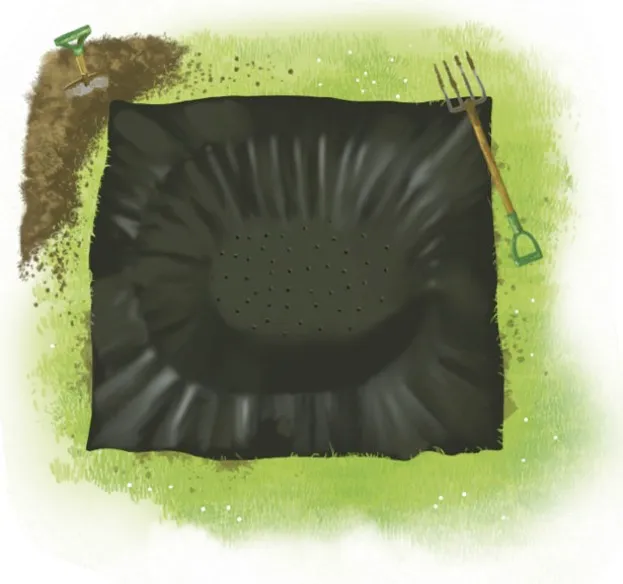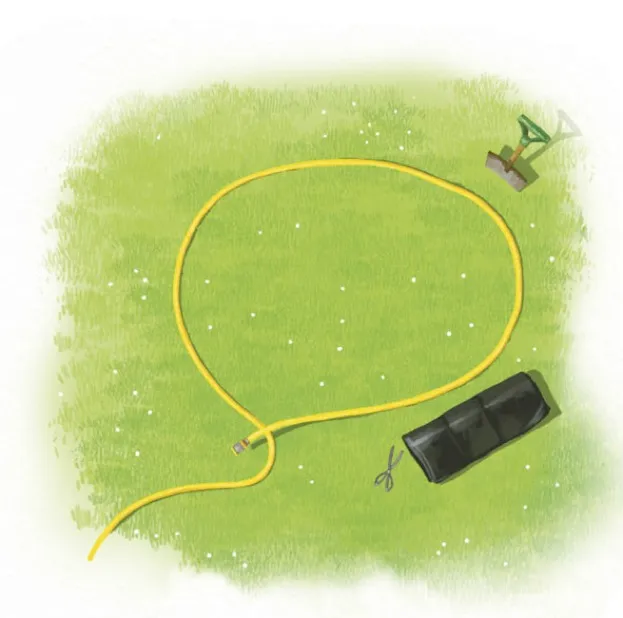Have fun with bright, showy plants, and make a stepping stone habitat between wet and dry with a bog garden in your back yard.
A bog garden is a great alternative to a pond. One is a body of still water, while the other is a patch of wet, slowly draining soil that looks like a natural bog. “Bogland is interesting because it connects the wet and dry ecosystems in a landscape,” says Trevor Dines, a botanical specialist for Plantlife. “Like any transitional habitat, bogs offer vital resources to a huge variety of wildlife. ”.
As well as creating biodiversity, the moisture-loving flora of the bog can look utterly spectacular. “These are colourful and dramatic species,” says Trevor. “They are great fun to play with, growing big and tall and making a real statement. ”.
Bringing a touch of boggy splendour to your garden is easier than you might think. There is no better time to start than late summer or early fall. Your bog will have time to settle down before winter, and the plants will have the best start possible in the spring.
A bog garden works equally well adjacent to a pond or on its own. Clay soils that are naturally damp are best, but you can make a wet habitat in soil that doesn’t drain well by adding topsoil and a liner. You can even make a small bog in a container. All you need is a half-barrel lined with plastic to bring a piece of this amazing and fun habitat into your backyard. Find out more at www. plantlife. org. uk.
A bog garden is a unique and gorgeous way to landscape part of your backyard. With the right plants and setup you can create a mini ecosystem that thrives in moist, acidic soil. Bog gardens are easier to make than you might think. Follow this step-by-step guide to make your own beautiful backyard bog garden.
What is a Bog Garden?
A bog garden mimics the conditions found in a natural bog habitat. It has very moist, acidic soil and features plants that thrive in those conditions. Some key features of bog gardens:
- Constant moisture – The soil is kept continuously wet, yet the plants do not sit in standing water. Frequent watering maintains damp soil
- Acidic soil – Bog gardens require soil with a low pH between 4.5-5.5. This is achieved by mixing in peat moss.
- Unique plants – Bog plants are adapted to wet, nutrient-poor soil. Popular choices include iris, astilbe, ferns, sedges, pitcher plants, and more.
- Attracts wildlife – The moist environment attracts birds, frogs, dragonflies, butterflies, and other creatures.
- Low maintenance – Once established, bog gardens need little care besides watering and weeding.
Choose the Right Location
Pick a spot in your yard that is naturally moist or retains water. Ideal locations include:
- Near downspouts or drainage areas
- Low sections where water collects
- Shady areas under trees or on the north side of buildings
- Next to ponds or streams
Bog gardens work great for areas with chronically wet soil or poor drainage. An existing soggy patch of lawn is perfect!
Prepare the Soil
Creating the right soil environment is crucial for a thriving bog garden. Follow these steps:
- Mark outlines and dig out area, removing grass, plants, and roots. Dig down at least 12 inches.
- Line the hole with pond liner or plastic sheeting with a few small holes poked through.
- Add a 2-3 inch layer of pea gravel for drainage.
- Mix in 4-6 inches of peat moss. This lowers pH and retains moisture.
- Fill remaining space with a 50/50 blend of peat moss and compost or triple mix soil.
- Soak thoroughly until the soil is completely saturated.
Select Plants
Visit local nurseries and garden centers and look for plants labeled for wet conditions. Here are top choices:
- Iris – Bearded, Louisiana, Siberian, Japanese
- Ferns – Cinnamon, royal, interrupted
- Astilbe – False spirea, false goat’s beard
- Pitcher plants – Cobra plants, monkey cups
- Lobelia – Cardinal flower, great blue lobelia
- Swamp milkweed
- Turtlehead
- Cardinal flower
- Marsh marigold
- Sweetflag
- Pickerel weed
- Yellow loosestrife
Plant and Mulch
Space plants 12-18 inches apart to allow room to fill in. Set them at the same level they were growing in the nursery pot. Cover bare soil with 2-3 inches of pine needle mulch or peat to retain moisture and suppress weeds.
Provide Continuous Moisture
Frequent watering is critical, especially in dry weather. Aim to mimic natural bog conditions where soil is damp but not saturated. Here are tips:
- Install a soaker hose or leaky pipe on automatic timer for regular moisture.
- Check soil moisture 2-3 inches down. Water whenever the top few inches become dry.
- In dry climates, plan to water for 30-60 minutes daily during peak summer.
- Rainwater is best since it lacks minerals that can alter soil chemistry. Or use distilled or reverse osmosis filtered water.
- Avoid fertilizer which can harm plants adapted to nutrient-poor bogs.
Maintain Your Bog Garden
With proper soil preparation and plant selection, bog gardens need minimal care:
- Weed regularly to prevent invasive plants from taking over
- Remove dead leaves and debris to keep soil exposed
- Divide or thin overgrown plants in fall or spring
- Cut back dead growth in winter
- Refresh mulch layer annually
- Test soil pH yearly and lower with aluminum sulfate if needed
Enjoy the Beauty and Wildlife
One of the best parts about creating a backyard bog garden is seeing it come to life. Listen for the sound of frogs croaking and keep an eye out for dragonflies zipping around. Birds like chickadees may come to bathe in the shallow pools. You’ll have your own thriving mini ecosystem to enjoy right outside your door.
Frequently Asked Questions About Bog Gardens
If you’re new to bog gardening, you probably have some questions. Here are answers to some common queries:
What size should I make my bog garden?
Bog gardens can range from a few square feet to over 100 square feet. Start small if this is your first time – a 3×3 foot area is a good beginner size. Expand in future years once you get the hang of bog gardening.
Do bog gardens require full sun?
Bog plants prefer at least 4-6 hours of sunlight daily, but partial shade is okay too. Morning sun with afternoon shade works well. Just avoid intensely hot, dry locations.
Should I put gravel at the bottom for drainage?
Yes, adding a 2-3 inch layer of pea gravel or pebbles provides drainage under the soil. Poking a few holes in any liner also improves drainage. The goal is moist soil, not standing water.
How often do I need to water the bog garden?
Plants should never be allowed to dry out. Test soil moisture daily and water whenever the top few inches become dry. In peak summer you may need to water for 30+ minutes daily depending on climate.
What’s the best time to plant a new bog garden?
Spring and fall are ideal planting times to give young plants time to establish roots before heat, drought, or freezing occurs. But you can plant anytime as long as you water diligently.
Transform Your Yard with a Beautiful Bog Garden
With a little planning and effort, you can create a unique bog garden as a focal point in your yard. Follow this guide to choose the right location, prepare the soil, select plants, and maintain healthy growth. Soon you’ll have a thriving landscape feature that attracts fascinating wildlife and adds natural beauty to your outdoor space. Get started on your own backyard bog garden this season!
Dig a big hole
Dig a hole 50–100cm deep, placing the soil to one side. Put a butyl liner over the hole and poke holes in it with a fork so water can drain out. Remember, you’re not making a pool, just a wet spot in the ground.

How to create a bog garden
Mark the outline using a rope or hose on sunny, level ground away from overhanging trees. “At least six hours of sun a day is needed in any wetland site,” says Trevor.

- The Ultimate Guide to Growing Strawberries in Raised Beds - August 8, 2025
- No-Dig Garden Beds: The Easiest Way to Grow a Beautiful Garden - August 6, 2025
- How to Protect and Preserve Wood for Raised Garden Beds - August 6, 2025
